Note from LeftEast editors: The article is complemented with the reproductions of the paintings of Rita Süveges. In her works, she inquires the possibilities of the representation of the capitalocene and the nature transformed by capital and labor. She is a member of xtro realm, an artist group, which is dealing with new-realist and ecological theories that critique the anthropocentricism of contemporary thinking, in order to provide access to the discourses of climate change and the Anthropocene.
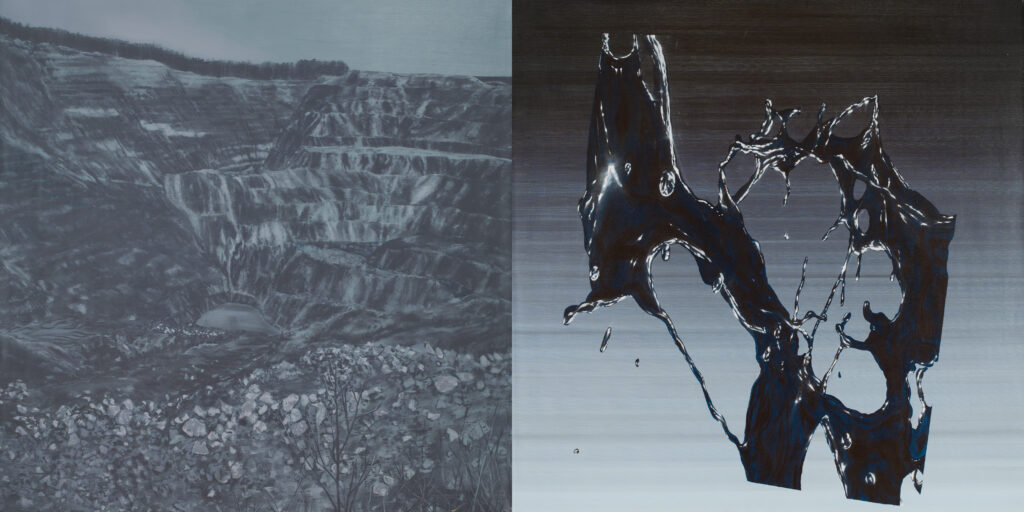
Rita Süveges, Black Gold, 150x300cm, acrylic on canvas, 2020. Photo by Zsuzsanna Simon.
INTRODUCTION
Articles starting with “COVID-19 has shown…” became a meme during the first lockdown of 2020. In fact, the crisis following the virus has not only shown, but also enhanced the contradictions rooted in the social relations of existing global capitalism. In Hungarian cultural production and the local policies reacting to the crisis, we can observe an interplay between conscious exploitation of the crisis to strengthen the hegemonic process of the right-wing Orbán regime, and processes which are the result of structural contingencies. In our understanding, the cultural policies of the Orbán regime are forming a hegemonic process in which the liberalization of cultural production and the creation of a new, ideologically fitting, ethnonationalist, conservative cultural canon are complementary processes reinforcing each other. In 2020, the concept of hegemony even became a buzzword in the government-allied think tanks. The boost of ethnonationalism and implementation of neoliberal reforms, especially in fields integrated into global value chains, such as the design and film industries, are not conflicting, but rather, complementary elements, since the liberalization of cultural production can also push actors towards the ideologically incorporating, but financially more secure state institutions.
In the following, based on our observations in the fields of visual arts, popular music, and literature, we will overview the impacts of Covid-19 on the life of cultural producers, and the ways in which state interventions may have contributed to the deepening of the political-economic-cultural complex of the Orbán regime, established in the last ten years. At the same time, we will also point to ways in which the cultural construction of the regime can be undermined, especially in relation to the local cultural industries’ exposure to global capital and its integration into global value chains. While the recent transformations of higher education can be also interpreted in this framework, this would require a separate article, therefore it will not be covered in this analysis.
GIG ECONOMY AND CULTURAL PRODUCTION
Just a couple of weeks after the outburst of the first wave of COVID, Kristóf Nagy and Márton Szarvas circulated a survey among emerging cultural producers in the field of visual arts and literature. The answers illustrated how dramatically the market had collapsed and that only state sources continued to be available. One of the respondents put it in the following way: I’m still on my Ph.D. scholarship, so I can sustain myself. But the profit of my German collector’s factory has dropped by 75%, and he has already emailed me that in the next three years he won’t be able to purchase from me. I’ve never hoped for the survival of a capitalist so much before.
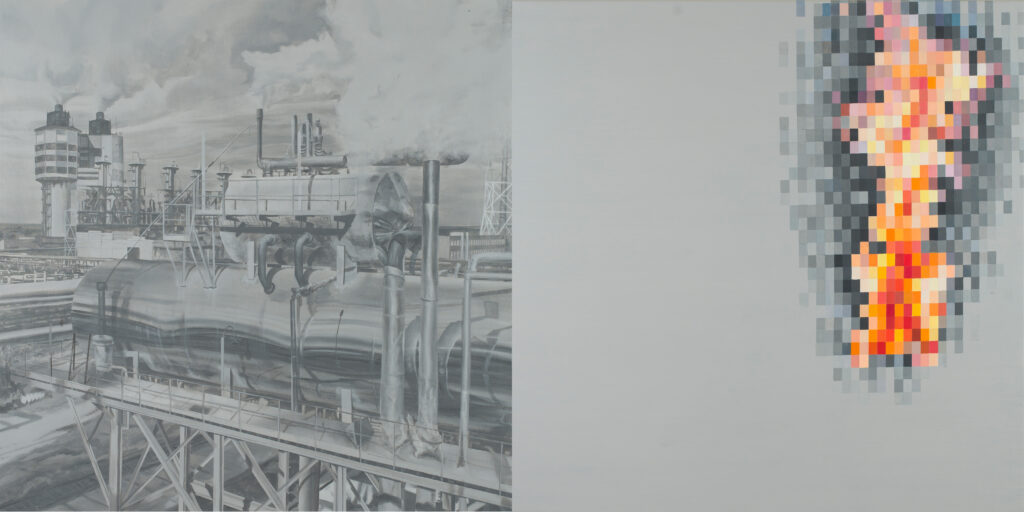
Rita Süveges, By-product Plant, 150x300cm, acrylic on canvas, 2021. Photo by Zsuzsanna Simon.
Even after such a short time, 55% of the respondents mentioned that the COVID crisis created “some difficulties” for them, and 15% said that it made it “difficult to make ends meet.” Regarding the possible long-term effects of the crisis, it is important to keep in mind that the younger generation of cultural producers has limited savings, therefore surviving the crisis on savings only is unlikely. Many of them sell their services in the “gig economy,” outside of any long-term contractual employment. These cultural workers are self-employed and therefore directly dependent on the economic conjuncture and the fluctuation of jobs requires semi-skilled creative workers. Their labor is readily disposable. Consequently, those who have been sustaining their livelihood outside of the state infrastructure, employed by the creative industries outsourced to Central and Eastern Europe, were hit the hardest.
Musicians and other music industry workers – sound and light technicians, stage managers, roadies, photographers, promoters, artist managers – can be regarded even more highly vulnerable to the measures related to the pandemic due to a number of combined factors. Firstly, in Hungary, as in other Eastern European countries (Antal 2020), the recording sector had been hit comparatively harder in the wake of the loss of income from record sales following digitization. For this reason, live music has been the primary source of income for music industry workers in the country in recent years (ProArt Music Industry Report 2020: 47). During the first and the current lockdown periods, live music events cannot be held, and although over the summer period, gigs with an audience below 500 were permitted, festivals were cancelled. Secondly, there is a general precarity due to the high proportion of freelance or self-employed workers and those working for micro-enterprises (ProArt Music Industry Report 2015: 93). Added to this are the prevailing project-based nature and seasonality of the music industries – the summer festival season is when many workers earn their income for the rest of the year. Surviving and progressing in the industry also requires constant investment in time as well as money – purchasing equipment, shooting music videos, paying for a rehearsal room, etc. These factors contribute to unevenness and unpredictability of income, as well as a high level of economic inequality (ProArt Music Industry Report 2017: 17).
PREVIOUS CRISIS MANAGEMENT
Under these conditions, one possible escape route for these young cultural producers is the network of state-supported institutions, which cultural producers – especially in the fields of fine art and literature – sought to boycott in previous years because of the aggressive takeover orchestrated by Fidesz during its first term. This suggests that authoritarian control might further strengthen in the future. One might then look at an earlier scenario to figure out how the Orbán regime might react by applying recipes that worked in the past. After it came to power in 2010, in the wake of the global economic crisis of 2008, the Orbán government slashed ca. 20% of public cultural sector expenditure, which led to dismissals in cultural institutions. It also introduced a public work program that fixed the reserve army of cultural workers, provided cheap labor for the state, and contributed to the utilization of EU funding for digitalization.
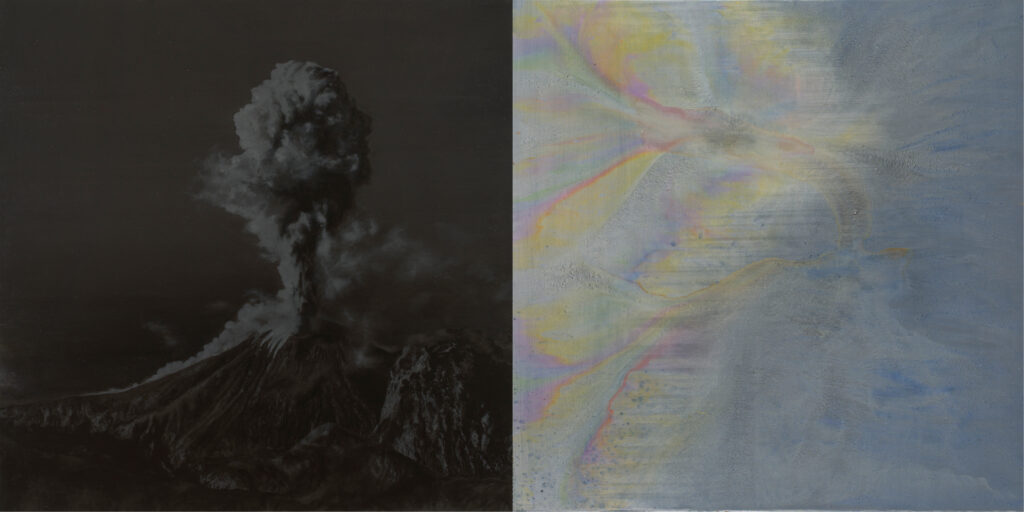
Rita Süveges, Dissolution, 150x300cm, acrylic on canvas, 2020. Photo by Zsuzsanna Simon.
In the first month of the coronavirus crisis, we can see similar strategies that tend to weaken the protection of the state-employed cultural workers. Under the slogan of flexibilization and competitive salaries, the government reformed the civil servant status of the employees of institutions of basic cultural services, diminishing the relative protection and predictability of these professions, which had compensated the workers for the relatively low salary they were earning. While commentators usually understand this change as preparation for political clearings, we rather view it as a prerequisite of further austerity politics, especially since the governmental justifications (Baán 2020) highly resemble the marketization reforms of the late 1960s and the neoliberal transformation which has been happening globally in the field of culture since the 1970s.
In the field of popular music, the post-2010 period can be characterized by increasing state control and incorporation. An extensive funding program was introduced in 2014, through which popular music has received significant state-level recognition and support for the first time since the regime change. Especially in the area of music export, the sub-program most clearly characterized by a management perspective informed by international practices and standards, the program has arguably contributed to a process of professionalization. In the area of live music, it has contributed to the strengthening of the gatekeeping position of festival promoters. Moreover, there is an increasing overlap between the sphere of the state and the live music sector through the occupation of key positions in the allocation of state resources by powerful promoters and festival directors (notably Norbert Lobenwein and Péter Muraközy). On the side of the workers, the increased dependence on this power structure is accompanied by very low, almost non-existent union membership. The economic growth observed by the music industry reports cited above has been strongly supported by, firstly, the self-exploitation of (predominantly self-employed) workers, which is underpinned by the ideology of the self-sacrificing and entrepreneurial artist – even for the “behind-the-scenes workers” of the industry. Secondly, “day jobs” both within and outside of the music industries. And thirdly, the invisible informal and reproductive contributions of households (home studios and rehearsal spaces, the free labor of partners and friends, the material support of parents, and so forth).
RESCUE AND INCORPORATION: THE CURRENT CRISIS MANAGEMENT
Visual artists at the early stages of their careers in today’s Hungary cannot simply avoid relying on the opportunities afforded by the Orbán regime, in the absence of international corporate funding and of a growing market. The art market is not a viable career path for emerging artists for two reasons: because of the lack of the purchasing power of a middle class with high cultural capital it is constantly in a precarious position, and because they are also dependent on state subsidies. In autumn 2020, after the coronavirus crisis had highly damaged the art market, the Hungarian National Bank started building a contemporary art collection. For this purpose, they purchased artworks of recognized contemporary artists who are not necessarily within their ideological block, such as Imre Bak, who had previously left the Hungarian Academy of Arts (MMA), an institution highly supported by the government and responsible for the production of knowledge and art aesthetically compatible with the rhetoric of the regime. However, ideological incorporation and market moves sometimes go hand in hand: the National Bank purchased 18 works from the Berlin-based László Lakner during the same months when he was elected an honorary member of the MMA.
In the summer of 2020, the government launched its bailout, which, in the art scene, was managed by the MMA. By this program, 2-2.5 million euros were distributed among those who applied to the open call, and an additional 400.000 euros were spent on artwork purchases. For the latter part of the bailout, MMA aimed to involve institutions of emerging artists such as the Association of Young Artists Studio (FKSE), the Studio of Young Photographers (FFS) and the Studio of Young Designers Association (FISE) (with the intended or unintended aim to divide and rule, but more likely to outsource administrative burdens) to purchase artworks from its members. The act of purchasing in this program (based not on an aesthetic choice, but on a bureaucratic process in which even anti-MMA works were bought) aims to hide that it is a welfare program and not a workfare one, which the regime propagates. Most of the participants in this workfare-like subsidy felt that the purchasing of the artworks of young artists was not a consciously planned project. It was also beyond the capacities of the MMA to coordinate such a project, with so many actors in it. Consequently, the outsourcing of the coordination was also a strategy to save on the administration of purchasing artworks. The program was not deliberately planning to draw the oppositional or independent pole of the field closer, but saving on the administration and coordination produced a side effect: namely, that an institution widely considered illegitimate among young, left-leaning or liberal cultural producers managed to gain symbolic capital.
These purchases are helping cultural enterprises by drawing them closer to the evolving new hegemony. Similar tendencies can be observed on the book market, where after the market crashed during the lockdown of early 2020, 25% of the most dominant, and vertically integrated Libri Publishing Group was purchased by a think tank of the new hegemonic order. In the case of art universities, an outsourcing and marketizing turn was accelerated in the last two years. In the case of the Moholy-Nagy University of Art and Design, where the shift was framed as streamlining and as a strategy of catching-up to the western creative industries, it was realized without any serious protest. By contrast, in the case of the University of Theatre and Film Arts, it was accompanied by what has been the most intense cultural protest of recent years, primarily because the outsourcing was justified by the institution’s lack of contribution to nation-building.
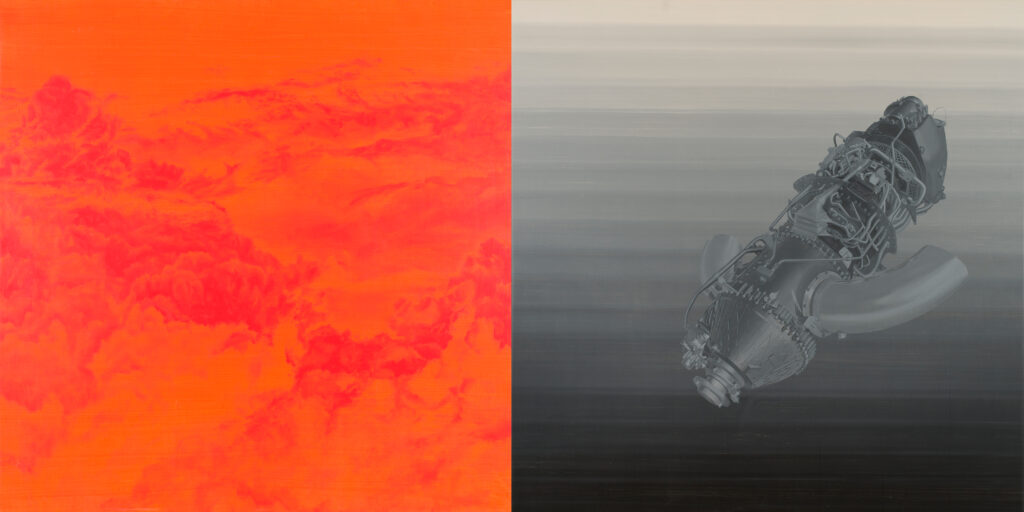
Rita Süveges, Fossil Jetlag, 150x300cm, acrylic on canvas, 2021. Photo by Zsuzsanna Simon.
In the field of popular music, as mentioned, the 2020 spring lockdown period included a total ban on live gigs. At the same time, there were no industry-wide support measures from the government, except for self-employed workers receiving some tax support. On 20 June, Szilárd Demeter, a key actor of the regime already in position as the head of Petőfi Literary Museum, was granted a new position of Ministerial Commissioner for the Renewal of Hungarian Popular Music. In this function, he released a detailed five-year popular music strategy compiled with the help of music industry experts. Nevertheless, the government COVID-19 music industry support scheme ultimately announced on 5 August, the ca. 15 million-euro “Warehouse Gigs” (Raktárkoncertek) program, apparently sidestepped Demeter, as well as the Hangfoglaló Program and other industry groups, in favor of the Hungarian Tourist Agency as an organizer, and state-owned company Antenna Hungária as the commissioned stage technology firm (Sajó 2020). The program enabled acts selected from three main genre categories – the above-mentioned live music gatekeepers were responsible for the selection – to perform at a “warehouse” venue without an audience, the performance to be recorded and archived, and the musicians to receive an increased performance fee. The main beneficiaries of the program, however, were the mentioned companies, bound to the national bourgeoisie. While many participating artists openly embraced this as an opportunity, some bands, acting in solidarity, publicly announced the distribution of the support they would be receiving among their broader team (managers, technicians), the handing over of the entire amount to other acts more in need of financial support, or to a fund set up for the support of technicians and other behind-the-scenes workers.
Foreseeably more young cultural producers will be incorporated by the COVID-19 crisis to the cultural infrastructure of the Orbán regime, especially since it often offers long-term and well-funded scholarships. While as a direct reaction to the crisis, numerous public cultural institutions reduced the work hours and salaries of their employees, the Minister of Human Capacities launched two rescue packages with a total budget of ca. 17 million euros. While its 10% landed directly at leading cultural institutions – led by reliable cadres – in the framework of the so-called Thank you Hungary program, ca. 3 million euros were distributed to help independent artists. This emergency fund is managed by public bodies led by reliable cadres of the regime, and in this way signals the incorporation of more than 4000 applying cultural producers, since, for the sake of accessing these funds, they have to work with institutions often previously boycotted. Moreover, the program echoes the logic of the public work scheme: in return, the aided artists are compelled to produce works related to the ideological horizon of the regime.
CONCLUSIONS: DEEPENING AUTHORITARIAN CONTROL
The reliance of the Hungarian music industry and its workers on live music is combined with inequality and vulnerability that the pandemic situation has heightened. This vulnerability has created a space for the post-2010 regime of capital accumulation to extend its hegemony and incorporation of the cultural field through the acquisition of positions and resources in the popular music field, including the Warehouse Gigs programme. At the same time, the government still leaves the majority of artists and music industry workers without support and, in a neoliberal fashion, leaves workers to absorb the costs of the crisis. Workers have relied on “day jobs” (existing or new ones), their savings, and informal household support for survival. Acts of spontaneous and bottom-up solidarity among industry workers have also been present, and bands, including the larger team around bands, seem to function as an important social and economic unit for informal redistribution, as well as care and mental support. In the case of the other analyzed fields, a similar process has played out, the crisis was either exploited for the sake of incorporation of institutions through allied capitalists or the individual vulnerabilities drew the actors closer through workfare-like bailout programs, in which the creativity of cultural workers was also utilized for the sake of the ideological normalization of the regime. The art-work purchasing program of the Hungarian National Bank in the meantime utilized the exchange value of artworks irrespectively with their ideological content. The entanglement of the ideological aspects of cultural production with the interests of the national bourgeoisie makes the regime’s ideological project more embedded and deeper than a purely superstructural phenomenon. After almost one year of COVID-19, we can say that the crisis has been effectively utilized to expand the field which the Orbán regime is capable of controlling, so much so that it has become almost impossible to live “outside of it.” At the same time, the crisis has also produced openly non-political, defensive networks of care and informal redistribution that could be utilized not only for capital accumulation, but also for the making of structures of solidarity

Emília Barna is a sociologist and popular music scholar. She is Assistant Professor at the Budapest University of Technology and Economics Department of Sociology and Communication, and head of the Cultural Industries MA specialization. She completed a Popular Music Studies PhD programme in 2011 at the University of Liverpool. Her main research areas music scenes and technology, the music industries and digitization, popular music and gender, and cultural labour. With Tamás Tófalvy, she has co-edited the books Made in Hungary: Studies in Popular Music (2017, Routledge) and Popular Music, Technology, and the Changing Media Ecosystem: From Cassettes to Stream (2020, Palgrave). She is a member of the Working Group for Public Sociology “Helyzet.”
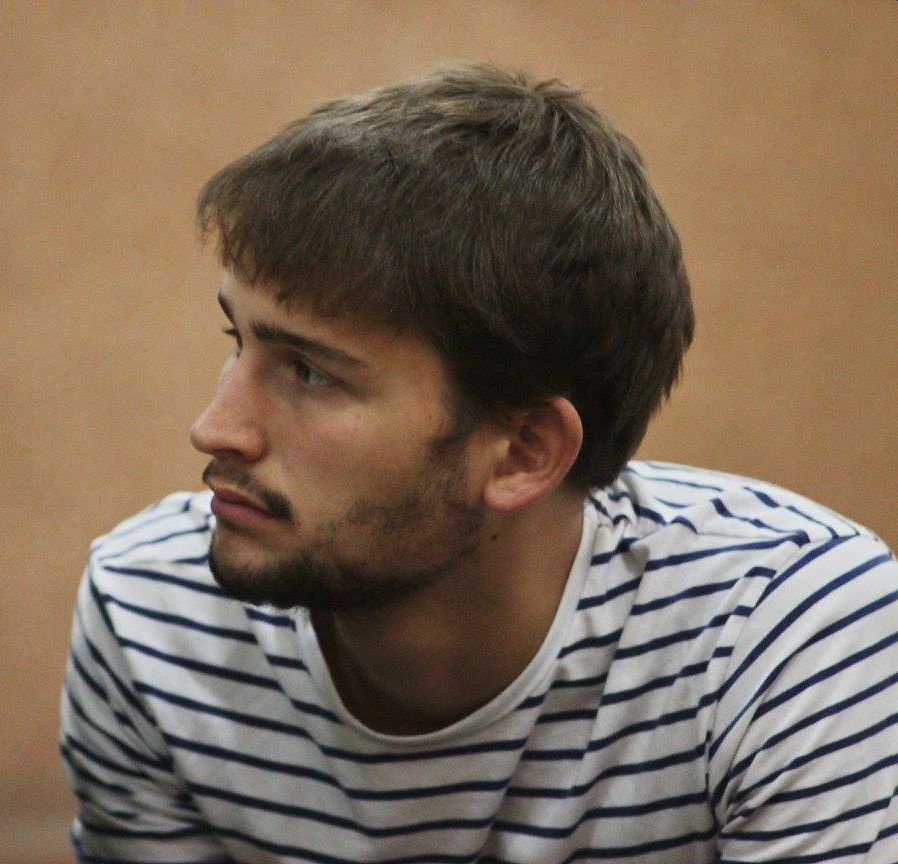
Kristóf Nagy is a PhD candidate at the Department of Sociology and Social Anthropology of the Central European University (CEU), and he is affiliated with the Artpool Art Research Center in Budapest. His doctoral project examines the configurations of state infrastructures of professional culture in Hungary in the context of state formation and hegemony forging. His most recent publication is the “Rabinec Studio: The Commodification of Art in Late Socialist Hungary” in the volume Contemporary Art and Capitalist Modernization. A Transregional Perspective (Routledge, 2020). In 2019 he co-curated with Márton Szarvas the Left Turn, Right Turn – Artistic and Political Radicalism under Late Socialism exhibition at the Blinken OSA Archives. He is a member of the Working Group for Public Sociology “Helyzet” and the editor of the journal Fordulat.
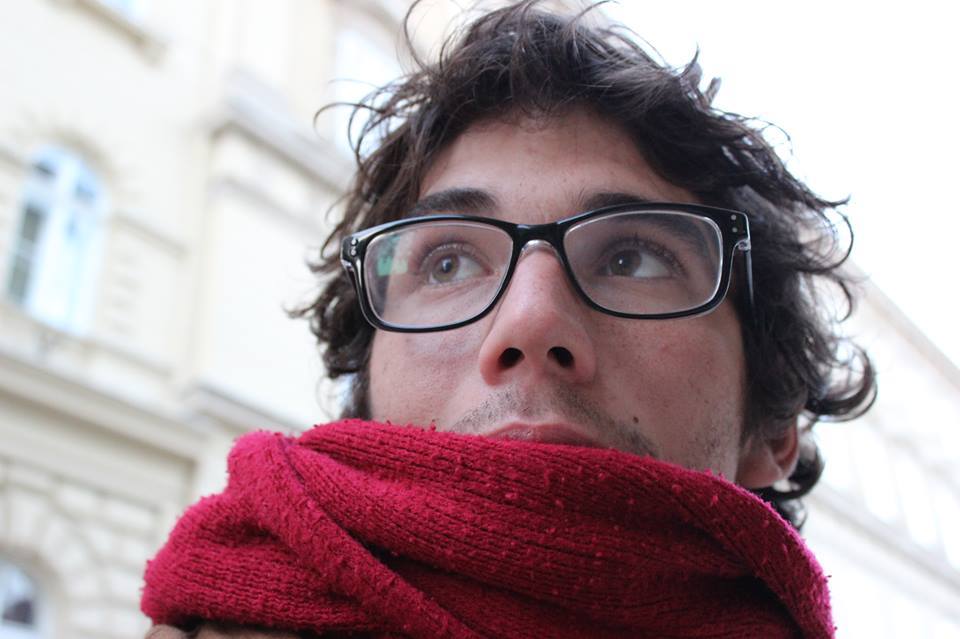
Márton Szarvas is a Ph.D. candidate of sociology and social anthropology in Central European University, Budapest. His dissertation interrogates the changing relationship between state and culture in contemporary Hungary in rural houses of culture. It examines the complex processes through which actors (both professionals of culture and citizens) create, reproduce, but also contest the symbolic power of the state in and through the institution of House of Culture. In 2019 he co-curated with Kristóf Nagy the Left Turn, Right Turn – Artistic and Political Radicalism under Late Socialism exhibition at the Blinken OSA Archives He is the member of Working Group for Public Sociology “Helyzet” and a founding member of the Solidarity Economy Center, Budapest.

